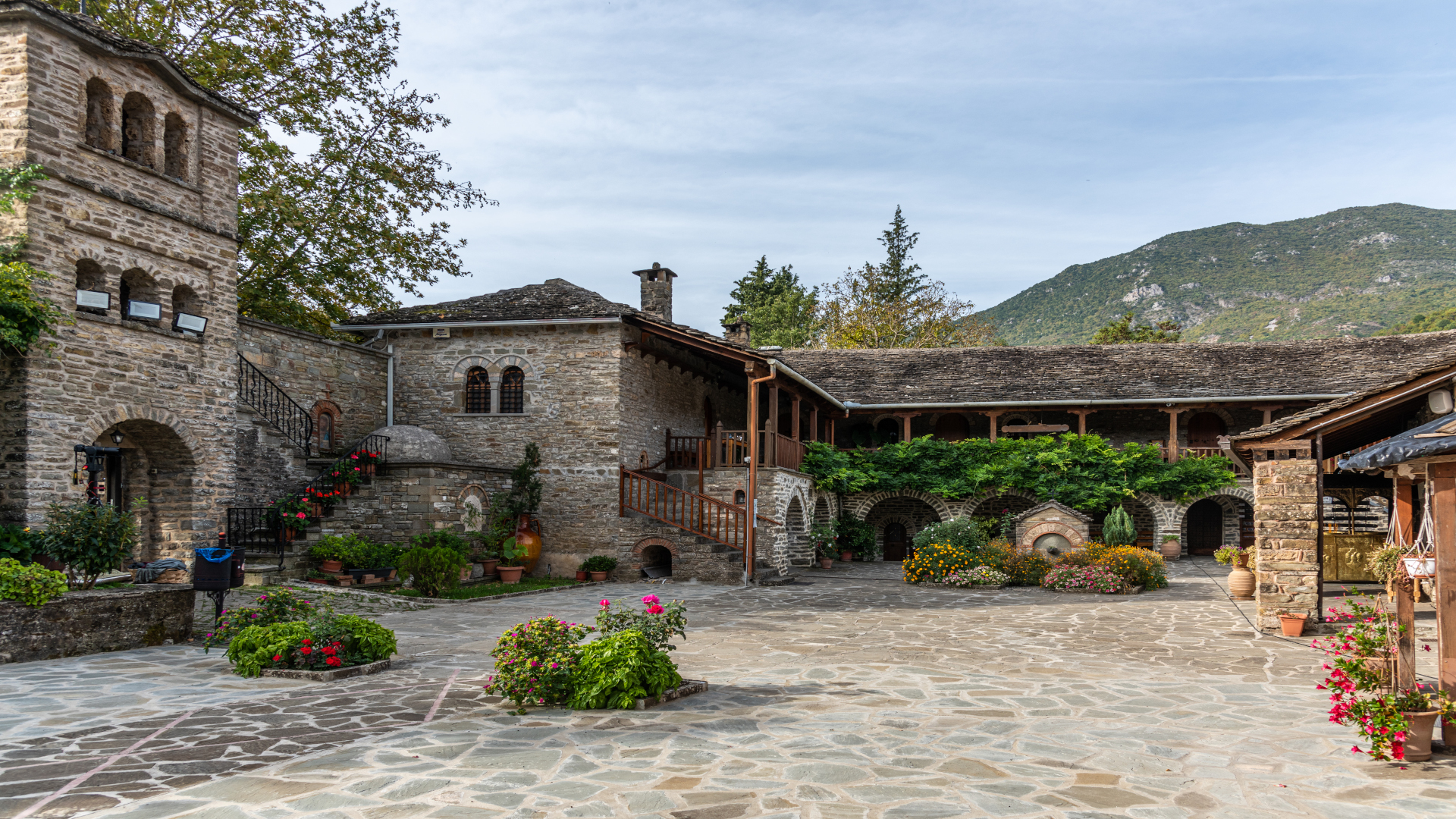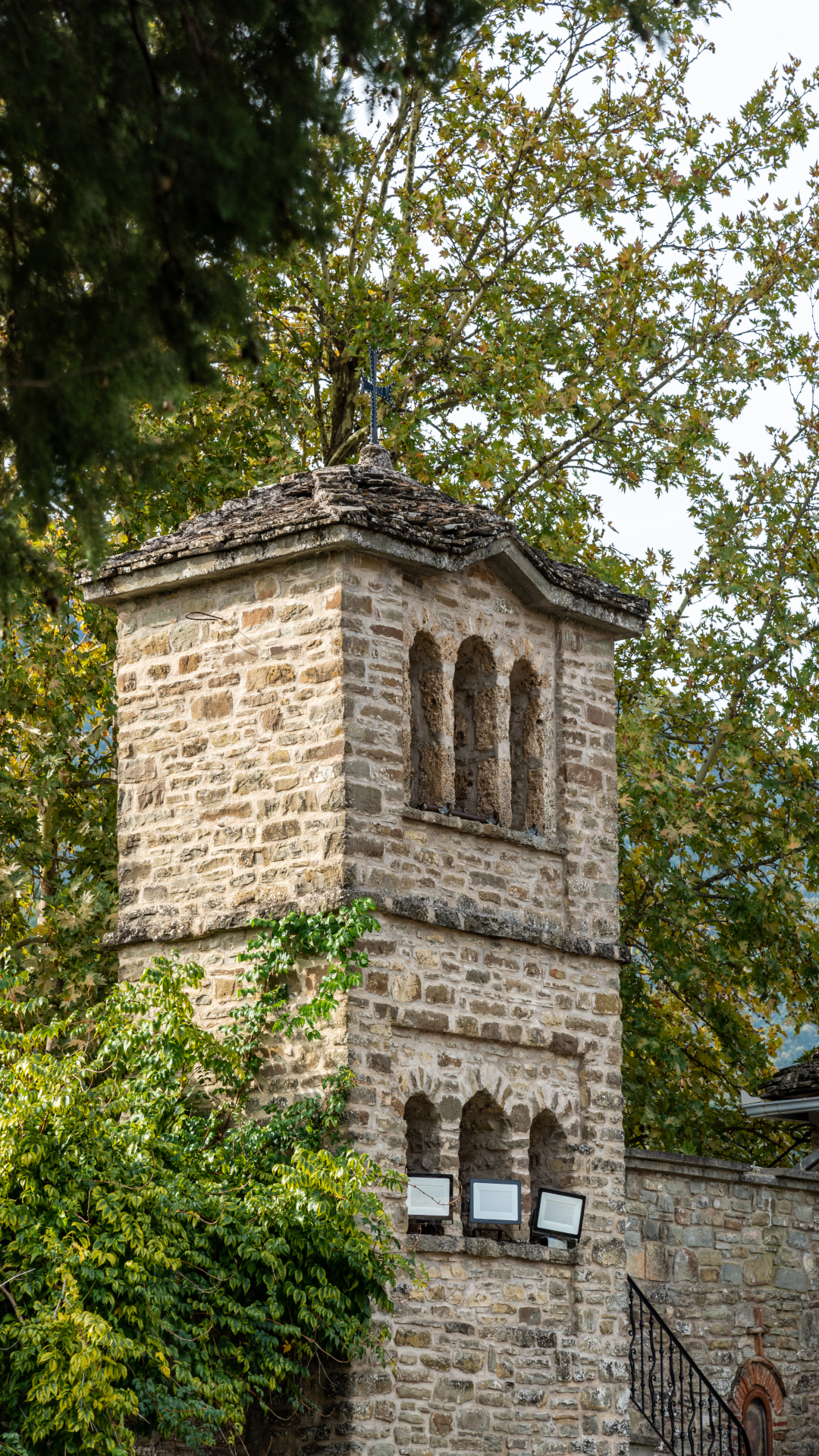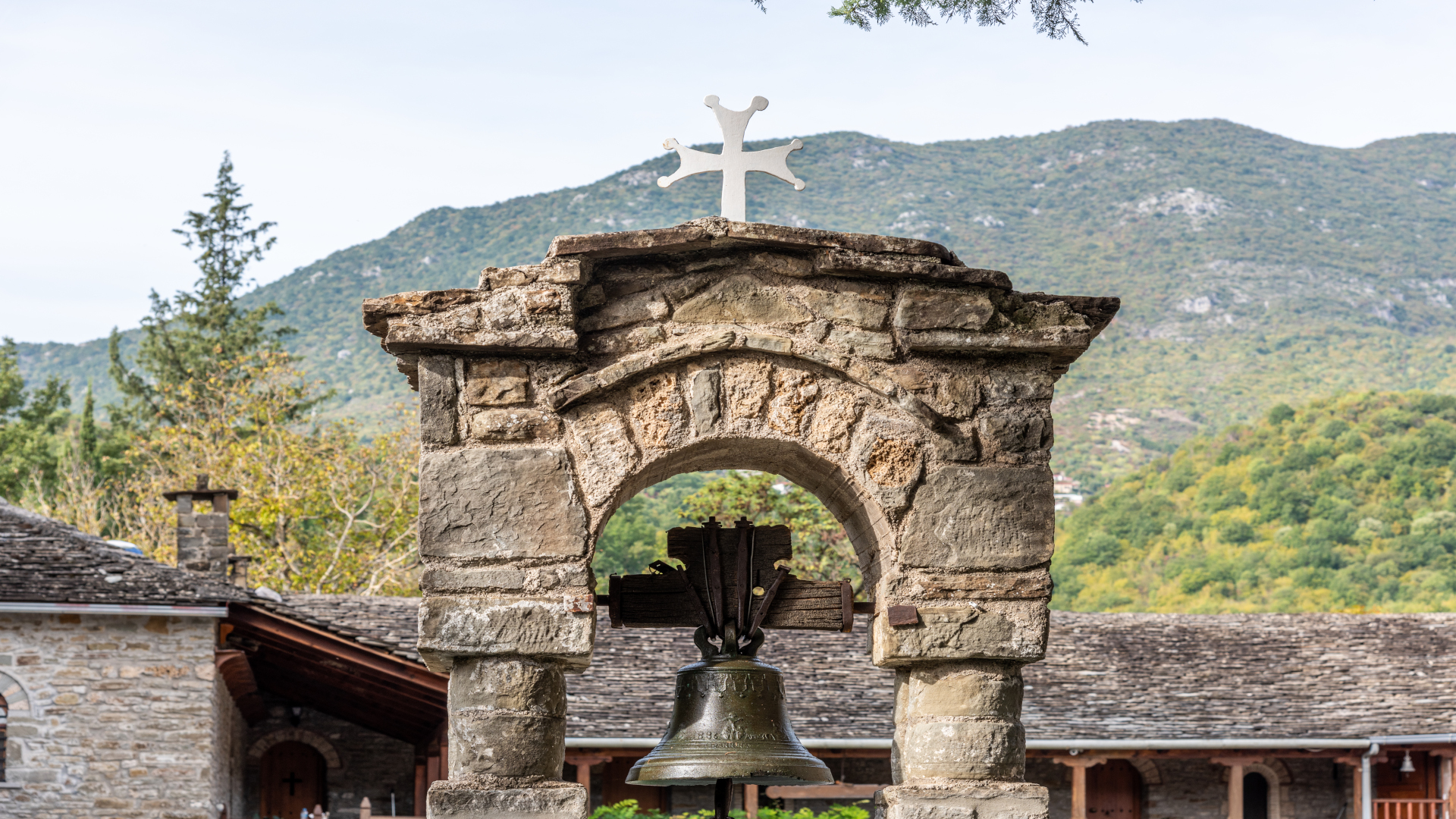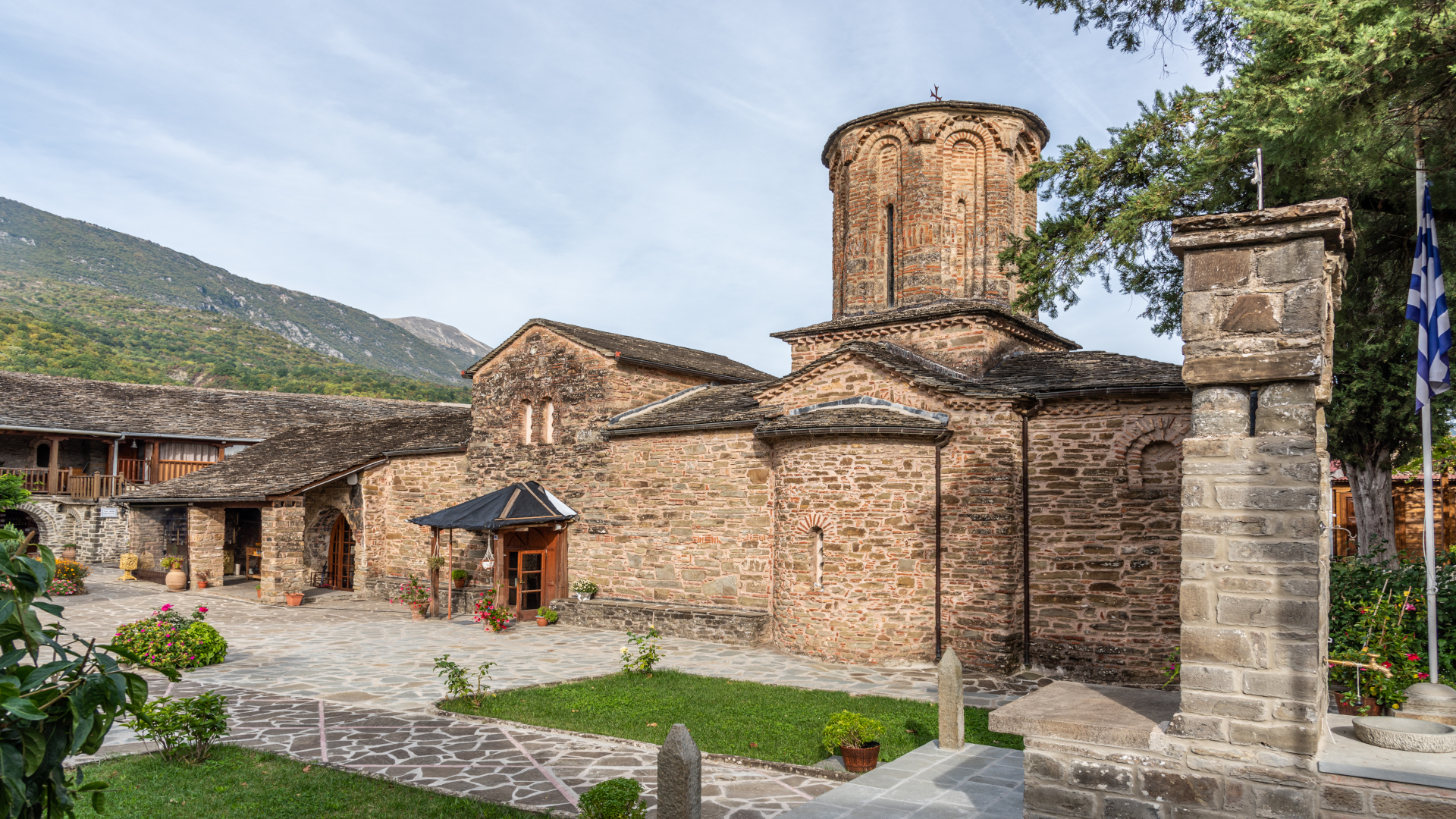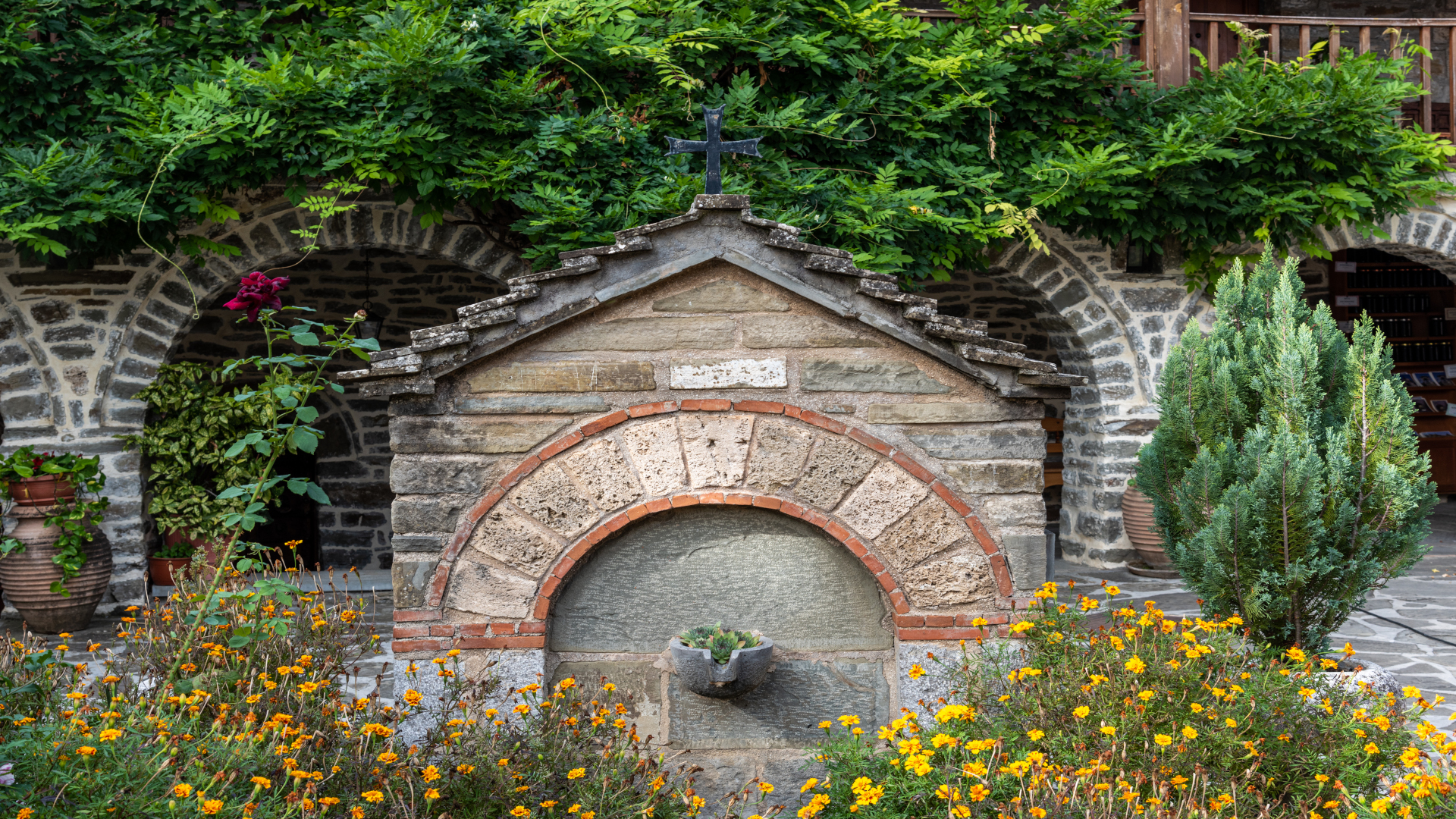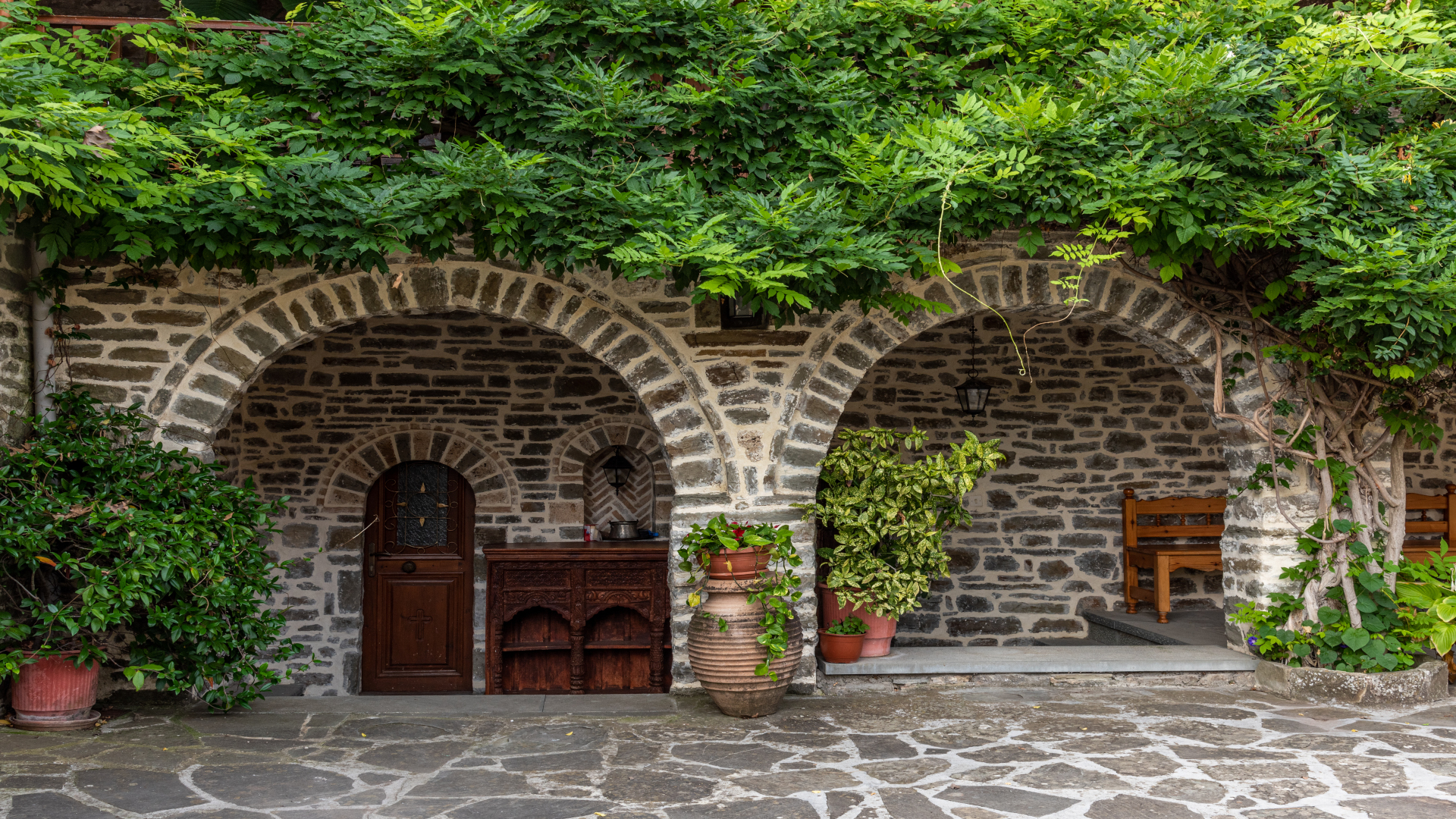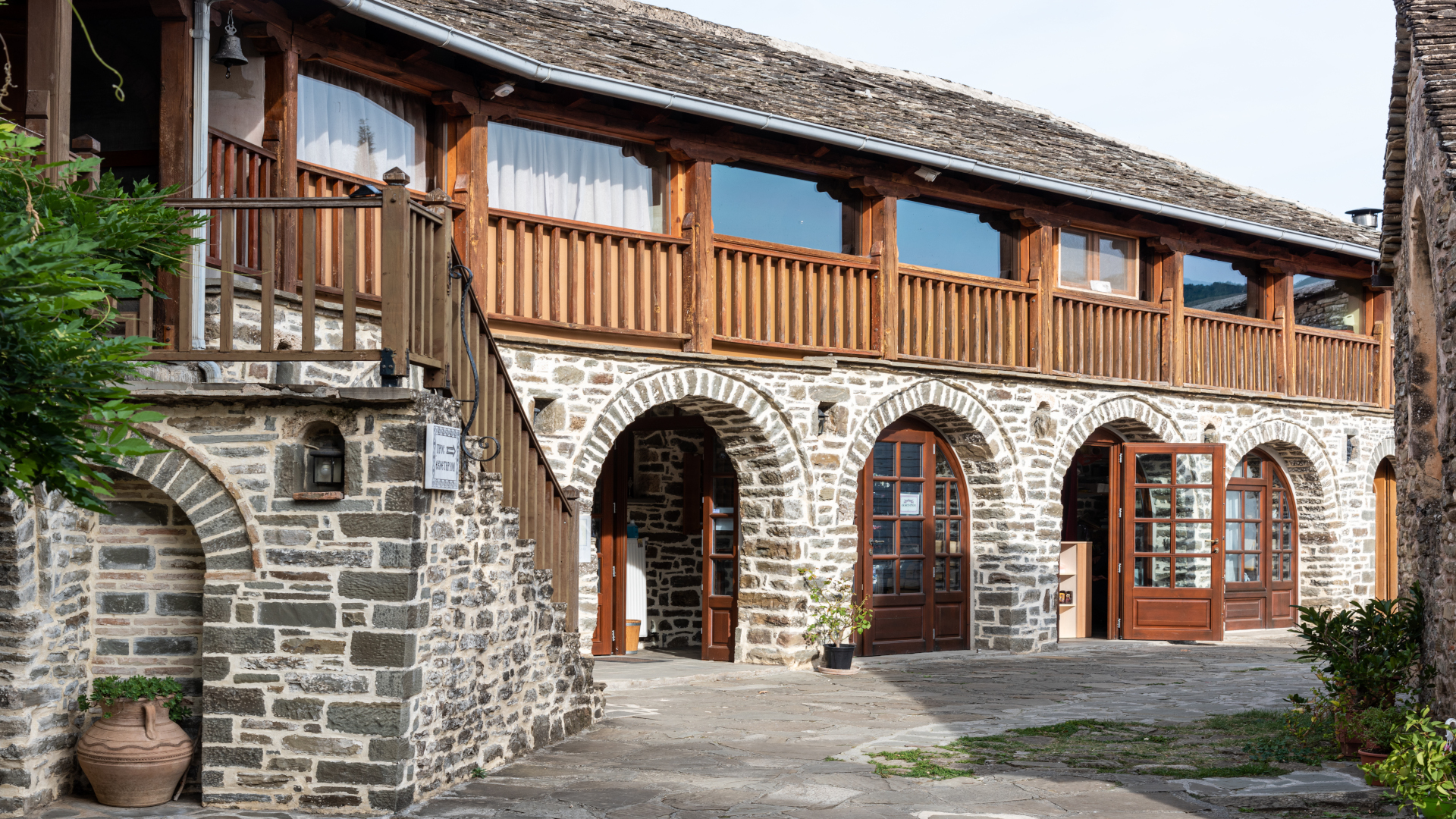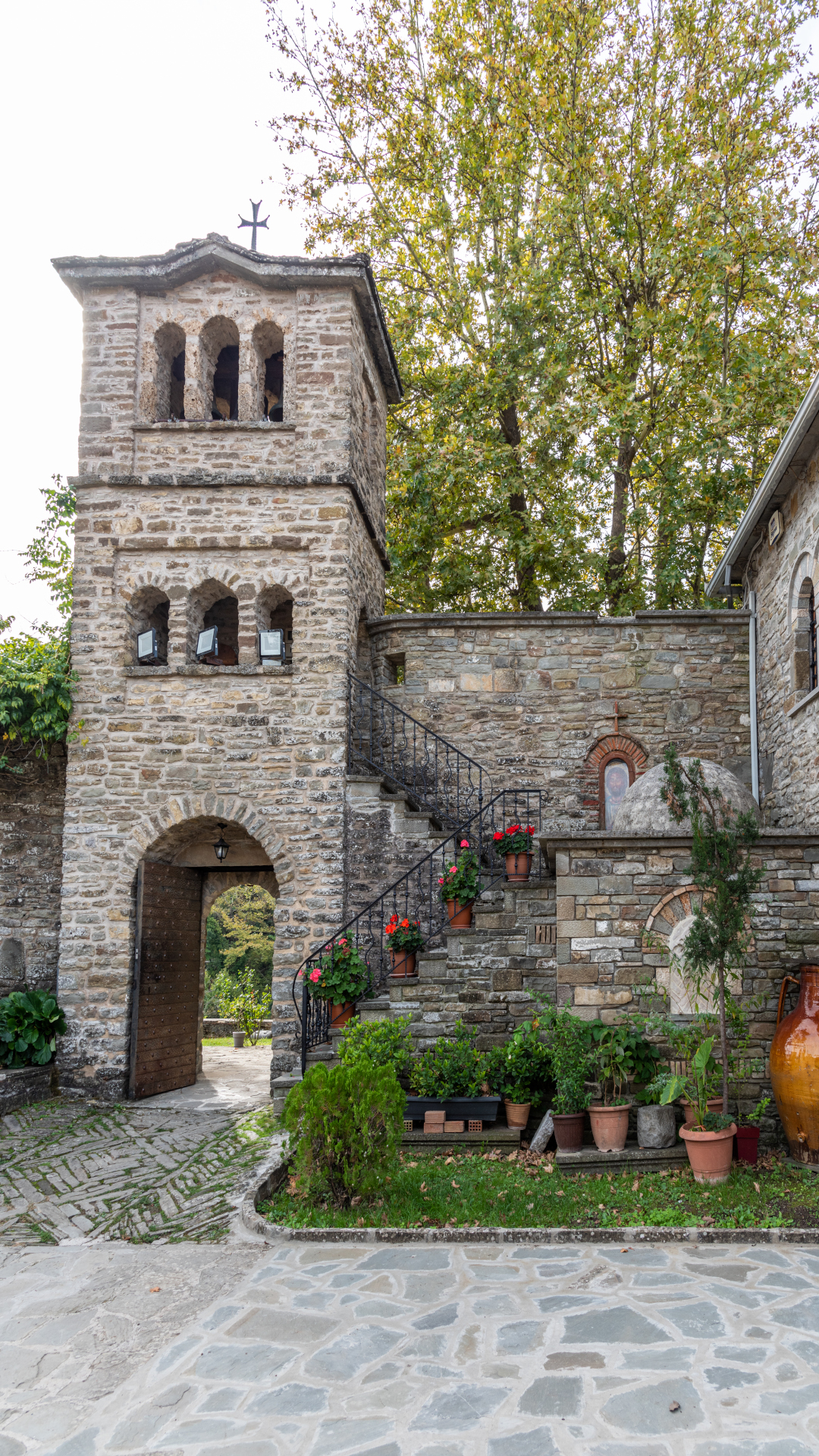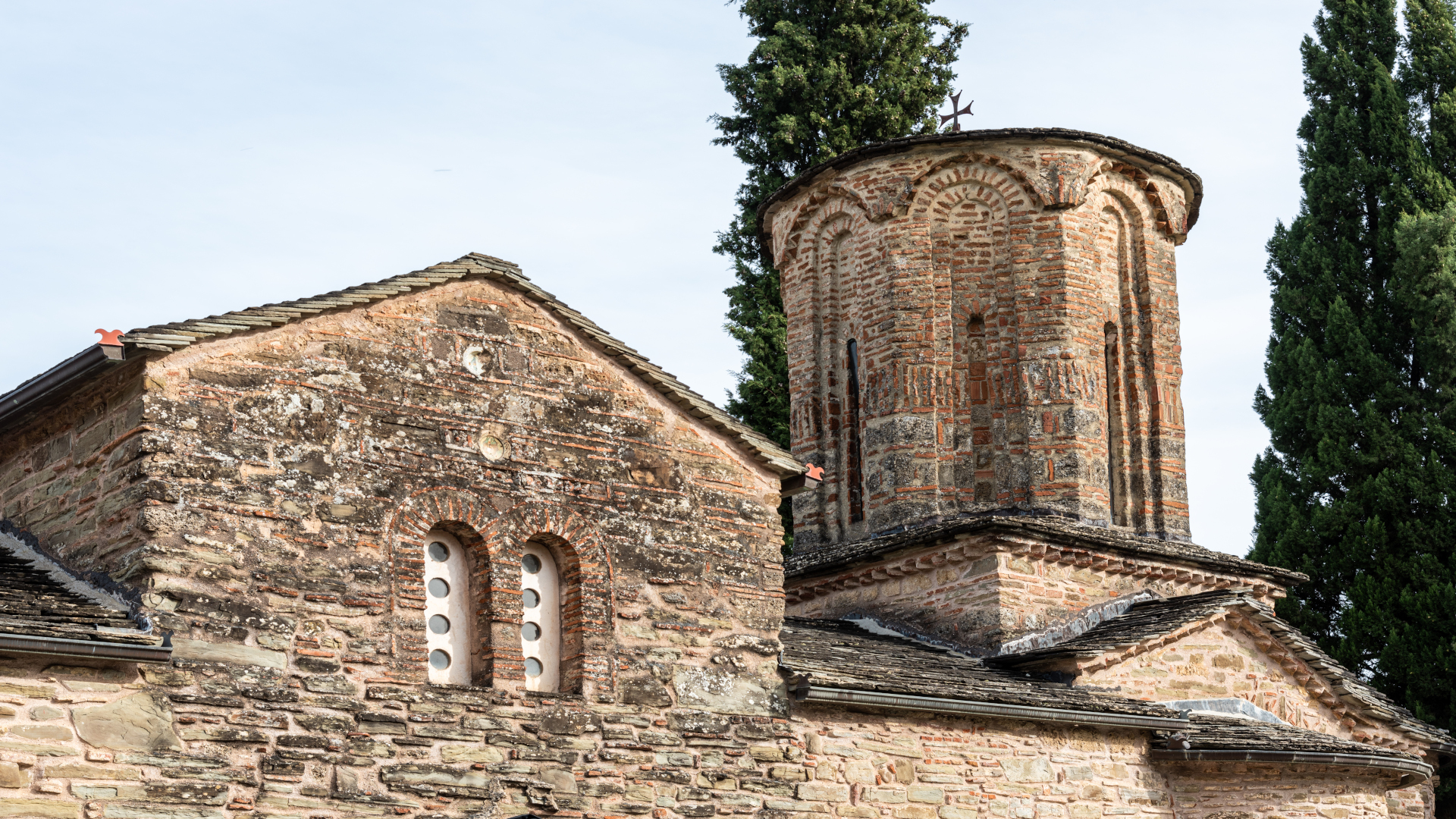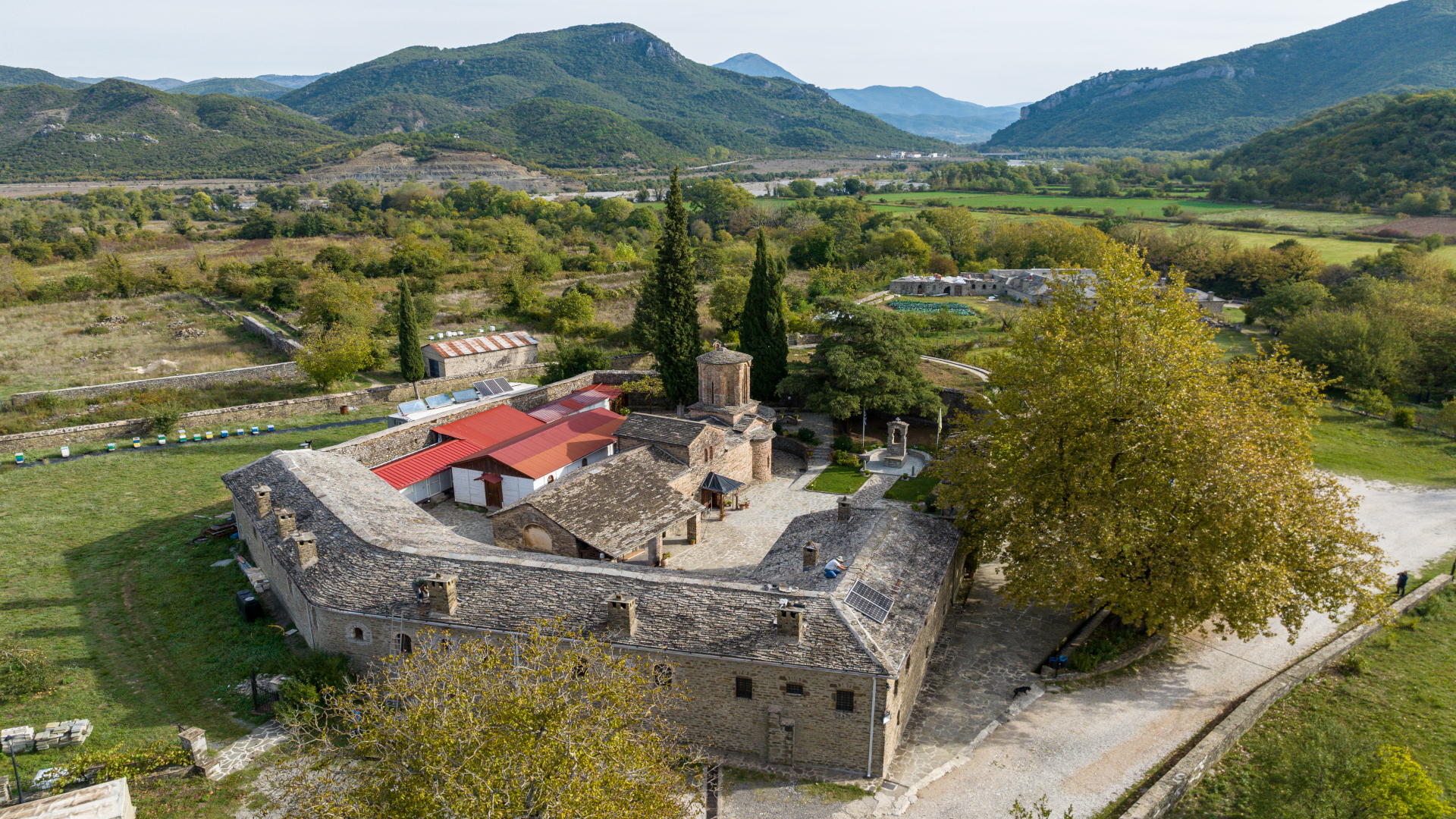Historical Monastery of Molyvdoskepasti Konitsi
In the position where the foothills of Mount Nemertsika meet the Aoos River, near its confluence with Sarantaporos, the Dormition Monastery of the Virgin Molyvdoskepasti is located. The name of the Monastery comes from the lead plates that, instead of tiles or stone slabs, used to cover its catholicon. The monastery, according to tradition, was founded by the emperor Konstantinos Pogonatos, as he was returning from his campaign in Sicily (671–672 AD) and was later renovated by the emperor Andronikos Palaiologos (1328–1341 AD). In later years, it was renovated by the residents of Pogoniani, who painted its catholicon in 1522. The monastery was the seat of the Pogoniani archdiocese from the 12th to the 17th century. From the 14th century, a school of manuscripts was operating, in which priests taught handwriting to monks and laymen. Many scholars and writers of the time graduated from this school. In July 1943, the monastery was bombed by the Nazis, the cells and the refectory were burned, and its catholicon was looted. The current monastery of Molyvdoskepasti maintains its fortress appearance, has renovated cells, two bell towers and a beautiful garden. Its catholicon is of the Byzantine style, with a high dome and well-preserved hagiographies from the 13th - 18th centuries, while on the west side of the narthex there are frescoes depicting Konstantinos Pogonatos and Andronikos Palaiologos. The wood-carved iconostasis of the church rests on the remains of an older marble iconostasis. The monastery, today, is an active men's monastery and celebrates at the fifteenth of August every year. It is preceded by a vigil from the evening of August 14 followed by a church service at dawn. In the courtyard of the Monastery, behind the Sanctuary, there is the tomb of Sevastianos, the blessed Metropolitan of Dryinoupolis, Pogoniani and Konitsa. Lead plates have recently been reinstalled on the roof of the catholicon and thus the monastery justly continues to bear the title "Lead Roofed", thus Molyvdoskepasti.
Photos
In the position where the foothills of Mount Nemertsika meet the Aoos River, near its confluence with Sarantaporos, the Dormition Monastery of the Virgin Molyvdoskepasti is located. The name of the Monastery comes from the lead plates that, instead of tiles or stone slabs, used to cover its catholicon.
The monastery, according to tradition, was founded by the emperor Konstantinos Pogonatos, as he was returning from his campaign in Sicily (671–672 AD) and was later renovated by the emperor Andronikos Palaiologos (1328–1341 AD). In later years, it was renovated by the residents of Pogoniani, who painted its catholicon in 1522.
The monastery was the seat of the Pogoniani archdiocese from the 12th to the 17th century. From the 14th century, a school of manuscripts was operating, in which priests taught handwriting to monks and laymen. Many scholars and writers of the time graduated from this school. In July 1943, the monastery was bombed by the Nazis, the cells and the refectory were burned, and its catholicon was looted.
The current monastery of Molyvdoskepasti maintains its fortress appearance, has renovated cells, two bell towers and a beautiful garden. Its catholicon is of the Byzantine style, with a high dome and well-preserved hagiographies from the 13th – 18th centuries, while on the west side of the narthex there are frescoes depicting Konstantinos Pogonatos and Andronikos Palaiologos.
The wood-carved iconostasis of the church rests on the remains of an older marble iconostasis. The monastery, today, is an active men’s monastery and celebrates at the fifteenth of August every year. It is preceded by a vigil from the evening of August 14 followed by a church service at dawn.
In the courtyard of the Monastery, behind the Sanctuary, there is the tomb of Sevastianos, the blessed Metropolitan of Dryinoupolis, Pogoniani and Konitsa. Lead plates have recently been reinstalled on the roof of the catholicon and thus the monastery justly continues to bear the title “Lead Roofed”, thus Molyvdoskepasti.

